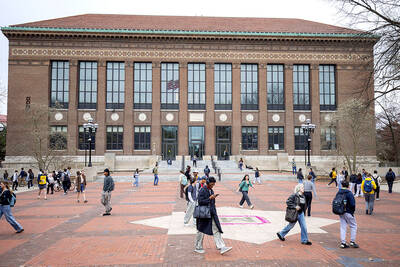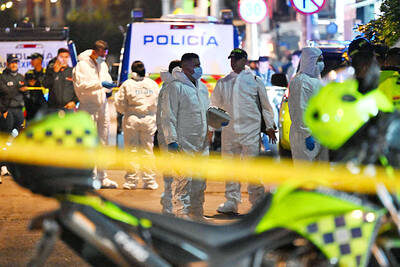The doctors and nurses at Futaba Hospital pleaded for help as a radioactive plume wafted over their hospital. They had been ordered out, but had no vehicles to evacuate the hundreds of patients in their care. After two days of waiting in the cold with no electricity, help finally came.
Nearly two dozen patients died in the chaotic, daylong odyssey that followed.
The Japanese government says only one person, an overworked employee at the Fukushima Dai-ichi nuclear power plant, died as a result of the worst nuclear disaster since Chernobyl. However, one year later, details from a new report and interviews with local authorities show many more perished because of bad planning and miscommunication between government agencies.
In fact, if the calamities that unfolded on March 11 last year, were to be repeated today, hundreds of thousands of lives would still be at risk, according to mayors, hospital administrators and disaster response officials interviewed by The Associated Press. They say little has been done to fix systemic planning shortfalls and communication problems between government agencies that compounded that day’s horrors.
BAD PRECEDENT
“We have set a terrible precedent for the rest of the nation and for any town in the world where nuclear plants are located,” said Katsutaka Idokawa, the mayor of Futaba, one of two towns straddled by the devastated Fukushima facility. “I see this disaster as a meltdown of Japan itself.”
Akinori Kahata, a nuclear disaster management official at the Nuclear and Industrial Safety Agency, said the government was reviewing its contingency plans — extending the regulations to cover up to 30km from a nuclear plant — because of the problems with the Fukushima evacuation, particularly with hospitalized and handicapped people.
However, officials in several towns around Japan where nuclear plants are located said they are not confident their emergency plans would work any better than Fukushima’s. They say it could take months and require a complete re-examination of how to approach evacuations for significant improvements to be made.
The breakdown in Japan’s crisis response was most striking in the evacuation of Fukushima’s sick and elderly.
According to a 400-page report released last month by the Independent Fact-Finding Committee on the Fukushima Nuclear Accident — a panel of academics, lawyers and industry experts — 784 patients were evacuated from six Fukushima hospitals within the 20km no-go area.
Of 435 at Futaba Hospital and a related senior care center, 21 died either in buses en route to evacuation centers, or in the centers themselves, before they could be admitted to another medical facility.
Jin Ishida’s grandfather was one of them.
Ishida, who is in charge of crisis management in Okuma, which is adjacent to Futaba and also hosts part of the Fukushima nuclear plant, said the disaster overwhelmed local authorities.
‘COMPLETE CHAOS’
“It was complete chaos,” he said. “We were not prepared. We had no protection, no protective gear, no experts. Our communication lines were disrupted, our phone lines were clogged by a flood of incoming calls. We didn’t have contingency plans for hospitals — even the firefighters didn’t have a plan.”
On March 12, Ishida scrambled to arrange for buses to evacuate patients from Futaba Hospital and its nursing care unit. He managed to get several and went outside the town hall to make sure they arrived. About 200 patients were moved. However, as the situation deteriorated the next day, drivers and transportation company workers fled or refused to come to Okuma because of radiation fears.
The buses arrived on March 14. Ishida’s 96-year-old grandfather was among the second batch of patients to leave. He did not survive the journey.
The government does not dispute that the evacuations may have caused deaths, but has not included them in its official death tolls. Doing so would open the door for compensation claims, which Tokyo Electric Power Co (TEPCO), the power company that runs the plant, is “open to consider,” according to company spokesman Osamu Yokokura. He could not confirm if any such claims have been made yet.
NO PLANS
Officials in several Fukushima-area towns, including Minami-Soma, said that they had no nuclear evacuation plans before the disaster, because Japanese regulations only require towns within 10km of a nuclear plant to make them. A 20km evacuation, involving nearly 80,000 people, was imposed on Fukushima.
Tokyo’s failure to update local leaders and health officials on the situation at the plant further heightened their sense of isolation.
“The government repeatedly issued evacuation advisories and then changed them,” said Akira Isaka, a surgeon who heads the Futaba District Medical Association. “Administrators had to find out through the media what was going on. This posed a huge problem for hospitals, which had to make plans on the spot and then completely change them as the zone widened.”
The Japanese government has acknowledged that coordination between national and local officials and plant operator TEPCO was severely flawed. It put the onus for establishing detailed evacuation, transportation and supply storage plans on local governments, but also criticized Tokyo for not giving them the backup they need.

A Chinese scientist was arrested while arriving in the US at Detroit airport, the second case in days involving the alleged smuggling of biological material, authorities said on Monday. The scientist is accused of shipping biological material months ago to staff at a laboratory at the University of Michigan. The FBI, in a court filing, described it as material related to certain worms and requires a government permit. “The guidelines for importing biological materials into the US for research purposes are stringent, but clear, and actions like this undermine the legitimate work of other visiting scholars,” said John Nowak, who leads field

Brazil, the world’s largest Roman Catholic country, saw its Catholic population decline further in 2022, while evangelical Christians and those with no religion continued to rise, census data released on Friday by the Brazilian Institute of Geography and Statistics (IBGE) showed. The census indicated that Brazil had 100.2 million Roman Catholics in 2022, accounting for 56.7 percent of the population, down from 65.1 percent or 105.4 million recorded in the 2010 census. Meanwhile, the share of evangelical Christians rose to 26.9 percent last year, up from 21.6 percent in 2010, adding 12 million followers to reach 47.4 million — the highest figure

Swedish campaigner Greta Thunberg was deported from Israel yesterday, the Israeli Ministry of Foreign Affairs said, the day after the Israeli navy prevented her and a group of fellow pro-Palestinian activists from sailing to Gaza. Thunberg, 22, was put on a flight to France, the ministry said, adding that she would travel on to Sweden from there. Three other people who had been aboard the charity vessel also agreed to immediate repatriation. Eight other crew members are contesting their deportation order, Israeli rights group Adalah, which advised them, said in a statement. They are being held at a detention center ahead of a

‘THE RED LINE’: Colombian President Gustavo Petro promised a thorough probe into the attack on the senator, who had announced his presidential bid in March Colombian Senator Miguel Uribe Turbay, a possible candidate in the country’s presidential election next year, was shot and wounded at a campaign rally in Bogota on Saturday, authorities said. His conservative Democratic Center party released a statement calling it “an unacceptable act of violence.” The attack took place in a park in the Fontibon neighborhood when armed assailants shot him from behind, said the right-wing Democratic Center, which was the party of former Colombian president Alvaro Uribe. The men are not related. Images circulating on social media showed Uribe Turbay, 39, covered in blood being held by several people. The Santa Fe Foundation